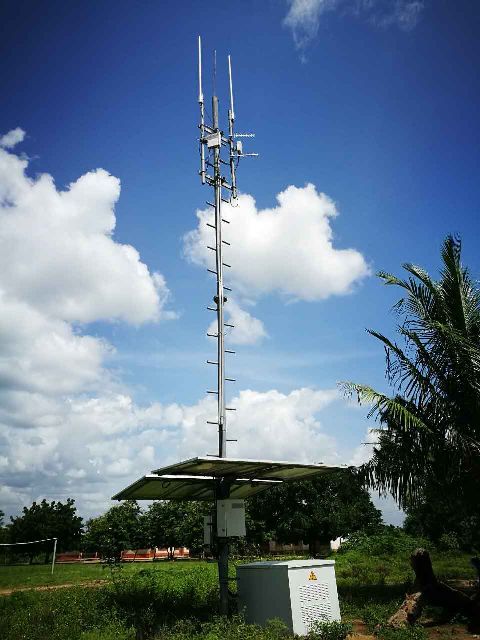Huawei's RuralStar2.0 Shortens ROI Periods to Less than 5 Years
Encouraging Operators to Deploy Sites in Remote Areas and Connect the Unconnected
[London, UK, November 17, 2017] Huawei launched RuralStar2.0, an innovative rural network solution, at the 2017 Global Mobile Broadband Forum in London. This solution provides super-distance, extended voice coverage and rural MBB access at low cost and shortens ROI periods to less than five years, allowing operators to rapidly deploy sites in remote areas and connect the unconnected.
Despite the presence of traditional tower-mounted macro sites deployed to provide wide-area coverage in remote rural areas, many of these areas have little or no coverage. As rural economies develop, rural residents have growing needs for communication and also require broadband access. However, deployment of traditional tower-mounted macro sites is expensive in remote areas. Infrastructure is lacking, and there is often no access to mains power or transmission resources. The average revenue per user (ARPU) is as low as USD 1 to USD 3 in these scarcely populated areas. Investment in traditional network deployment can take more than 10 years to recoup, if it is recouped at all. This makes operators reluctant to invest.
Huawei released RuralStar2.0, an innovative site solution in terms of transmission, infrastructure, base station design, and energy. This solution addresses increasing demands for voice and data services from the unconnected and increases operator ROI for rural network deployment. This solution fulfills the following rural MBB requirements: 2G, 3G, or 4G rural MBB networks providing rates of over 10 Mbit/s at cell edges and cell coverage of 5 km; Extended 2G and 3G coverage at a maximum distance of 60 km from the nearest tower-mounted site, providing voice and data (over 1 Mbit/s at cell edges) services and cell coverage of 5 km.
In terms of transmission, RuralStar2.0 adopts non line of sight (NLOS) wireless backhaul, which eliminates rental costs of transmission equipment and significantly reduces OPEX compared with satellite or microwave transmission. NLOS wireless backhaul supports multi-hop backhaul, which allows for a maximum distance of over 60 km from the donor base station, extending network coverage. In terms of infrastructure, NLOS wireless backhaul switches high-rise towers used in traditional rural networks to low-rise poles, reducing site infrastructure costs by 70%. As for energy, low-power base stations and transmission equipment do not require diesel generators for power generation and require fewer solar panels and batteries, which slashes CAPEX by 70%. Using pure solar energy saves O&M costs, in turn greatly reducing OPEX.
Omnidirectional antennas are used to achieve targeted omnidirectional coverage in a single cell at low cost. For cells with insufficient coverage, innovative 90° high-gain antennas can be used to deploy the butterfly site solution. This solution reduces the number of sectors from three to two, the number of antennas and RRUs by 1/3, and total power consumption by 30% as well as the CAPEX and OPEX compared with traditional sites. For a given population in a target area, RuralStar2.0's innovations in these aspects reduce TCO by more than 50% compared with traditional site solutions.

RuralStar deployed in Ghana
RuralStar has been commercially deployed in many countries, including Ghana, Thailand, Algeria, and Nigeria. Mobile network coverage boosts local economic development and improves local people's lives.
Cao Min, Vice President of Huawei Wireless Network Product Line, said, "People in emerging markets in remote areas have strong needs for mobile communication. A low-cost, efficient site solution is required in these areas. Huawei will work with operators to develop cost-efficient, scenario-specific site solutions to improve site deployment efficiency. RuralStar2.0, featuring low-cost, rapid site deployment and a short ROI period, offers a new method for global operators to provide coverage in remote rural areas and fulfill the social responsibility of connecting the unconnected."

